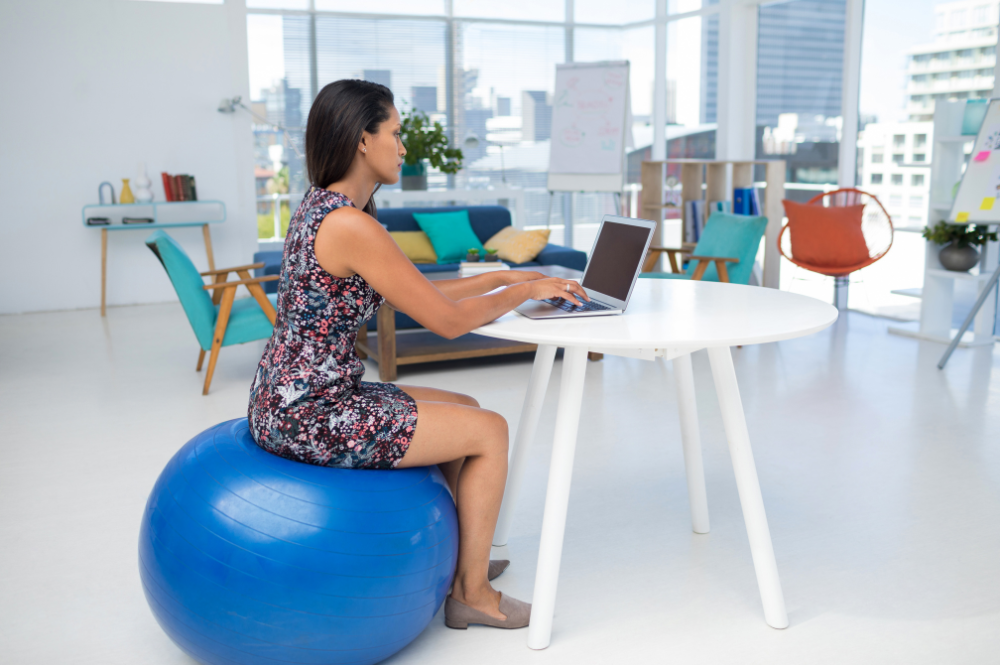You already know that sitting all day is bad for your health and posture. But what if there was a way to eliminate these negative effects?
Enter active sitting, a technique that helps you stay healthy while also improving your wellbeing and comfort. Active sitting may seem like an impossible concept, but it's really not that complicated.
In this article, we'll cover everything from the basics of active sitting to who needs it most and whether or not it’s the future of ergonomics.
What is active sitting?
Active sitting is a new approach to ergonomic office chair design that can help you sit more comfortably and move more naturally. Active sitting is an alternative to traditional or “passive” seating, which uses the body's natural movement patterns as a guide for posture and comfort.
Rather than using this natural movement as a base for improving your position, active sitting encourages it by making you engage your core muscles (abdominals and back) so that your pelvis stays in a neutral position while you sit. This means that if you're sagging forward or slouching in any way, your chair will gently push you back into having a straight, aligned posture.
Active sitting allows users to change their positions throughout the day as needed — from having legs up on another surface (like an ottoman), to leaning against the back of their chair with feet flat on the floor, depending on how they feel at any given time throughout their workday.
Who could benefit from active seating?
As we've seen, active sitting is a way to counteract the negative effects of prolonged sitting. But if you're not actively trying to avoid the effects of sedentary behaviour, who would need it?
People who sit for long periods of time: If you sit all day at a desk, then active sitting can help you get up and move more throughout the day. It's also great for those who work in other environments where there isn't much opportunity for movement — like an aeroplane or car — and it's helpful for those with health conditions that limit their ability to move around freely.
People who have health problems: Active sitting is especially beneficial for people with certain physical or mental conditions such as arthritis or Parkinson's disease because they don't have control over their movements quite like they used to.
The automatic adjustments made by active sitting can make getting out of bed easier on them in the morning; similarly, these adjustments may be helpful during difficult moments throughout their day as well (such as when standing up suddenly would cause them discomfort).
People who have back pain: Around 16 million adults worldwide are affected by some kind of back pain. Unfortunately, this often means spending many hours each day sitting down without really thinking about how our bodies feel! Active sitting allows users control over how far forward they lean and how much support they get from their chair back so that they can adjust accordingly based on what feels best at any given moment during usage. Ultimately, this means less strain placed onto areas already hurting due to improper alignment/posture choices made during normal use scenarios.
Related: The Best Furniture for Back Support
Are active sitting chairs the future?
Active sitting is a great way to sit. It's not the same as standing while you're sitting, but it can be beneficial for anyone who sits for long periods of time. If you have back problems or other health issues, active sitting may be ideal for you. But, there is little conclusive evidence to suggest active sitting enhances workplace performance.
The right ergonomic office chair is currently the tried and tested solution to mitigate the health problems bad posture can create. Active sitting is still in its early phase and hasn’t caught on fully yet, whereas good posture from appropriate back support has been proven to boost mood and productivity.
Without the proper lumbar support, active sitting chairs can serve more as a challenge to spine alignment than an easy way to correct your posture. However, as more and more people begin to work from home — we might see a shift to active sitting as the next natural step to improve our physical health.
At Purus Life, we’re committed to improving your workday and your wellbeing. Browse our collection of ergonomic office furniture to maximise comfort and concentration.

